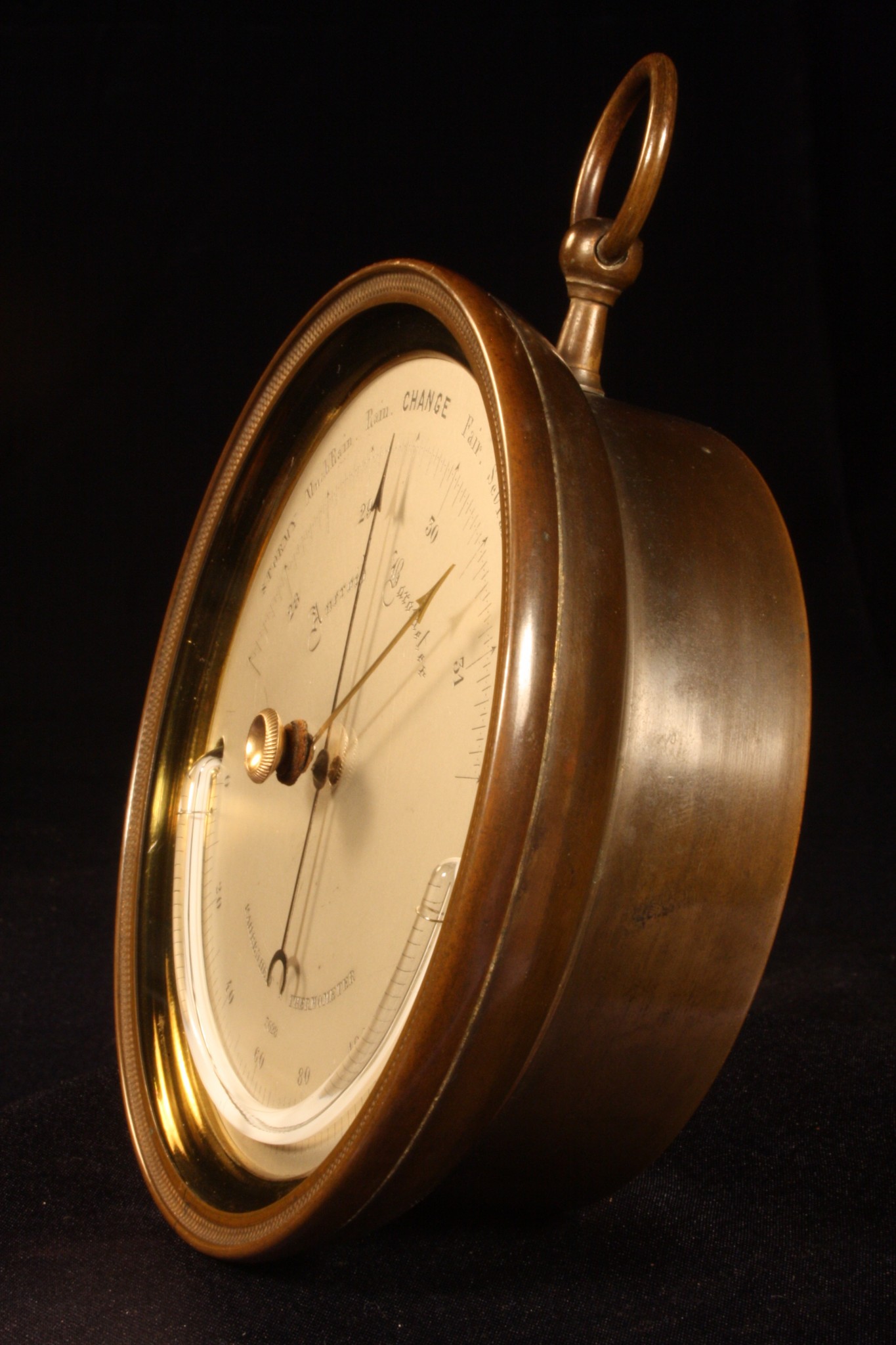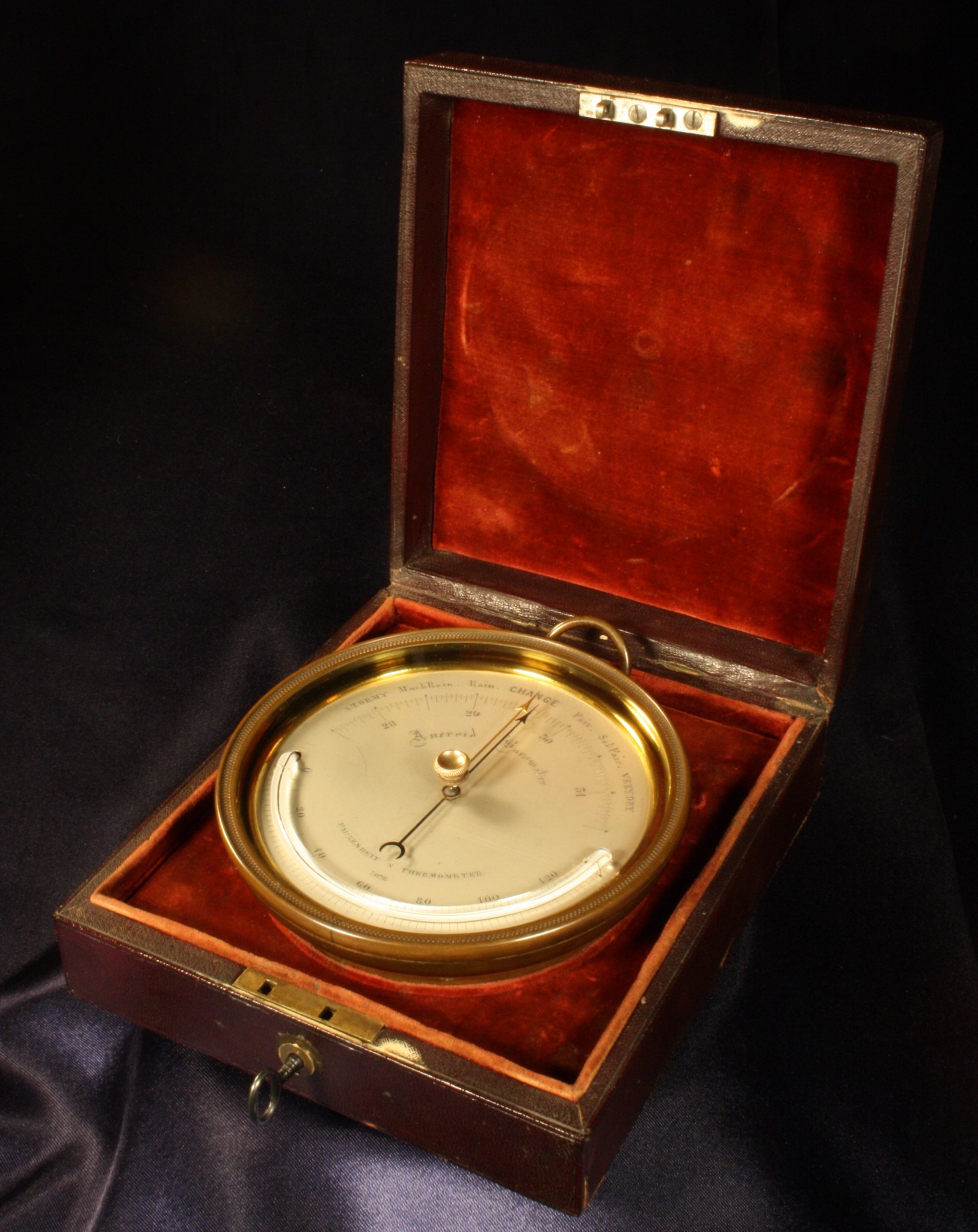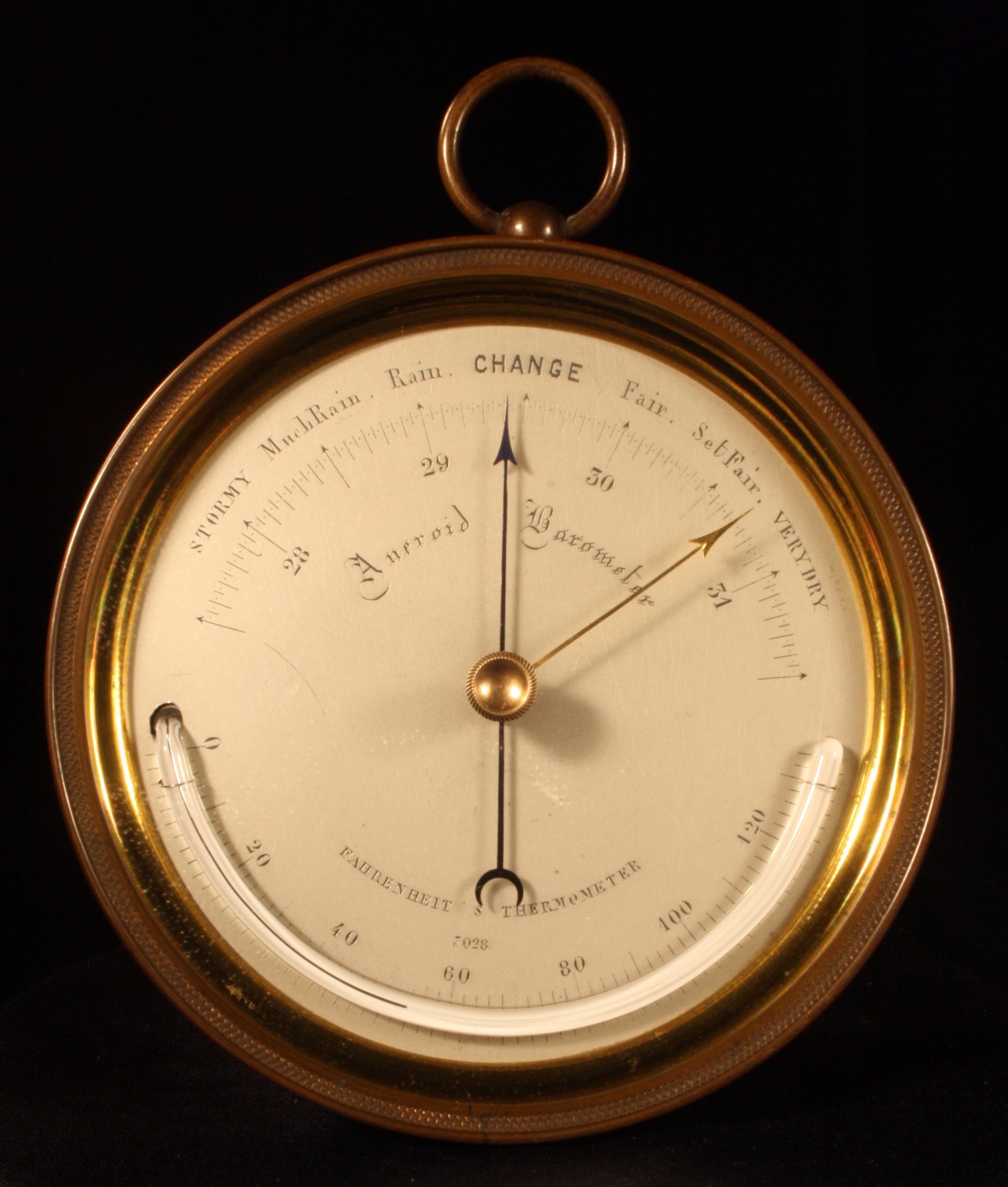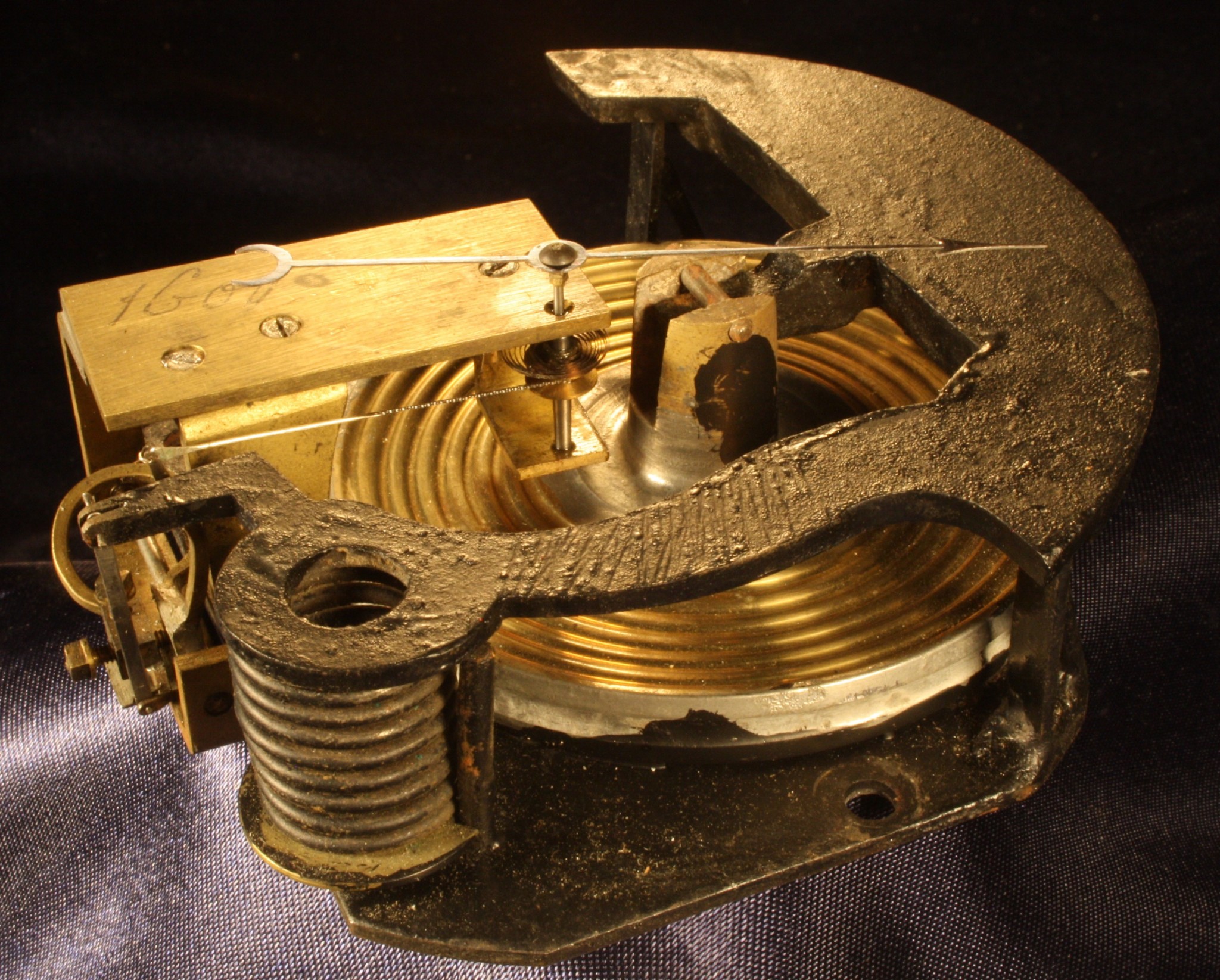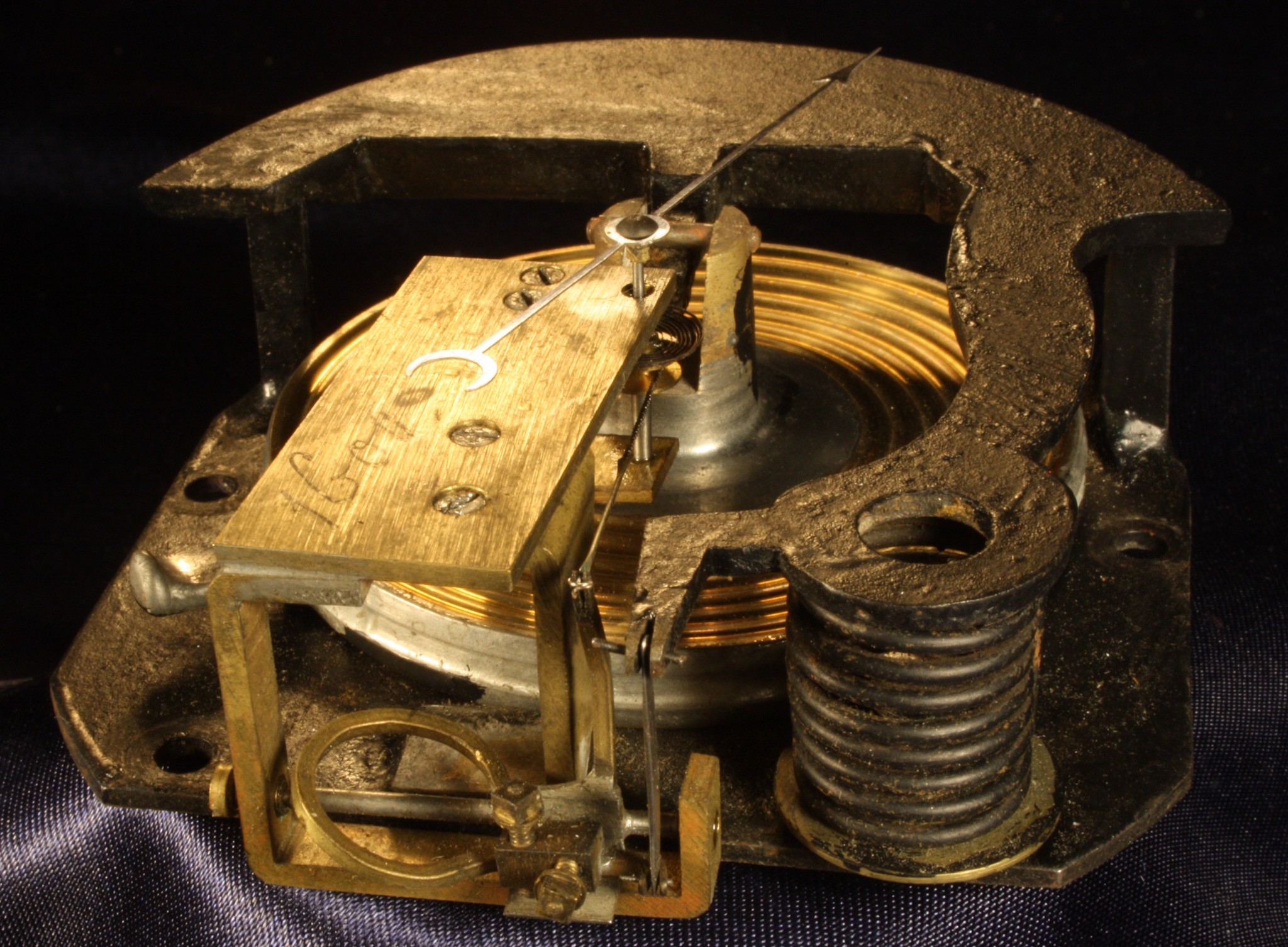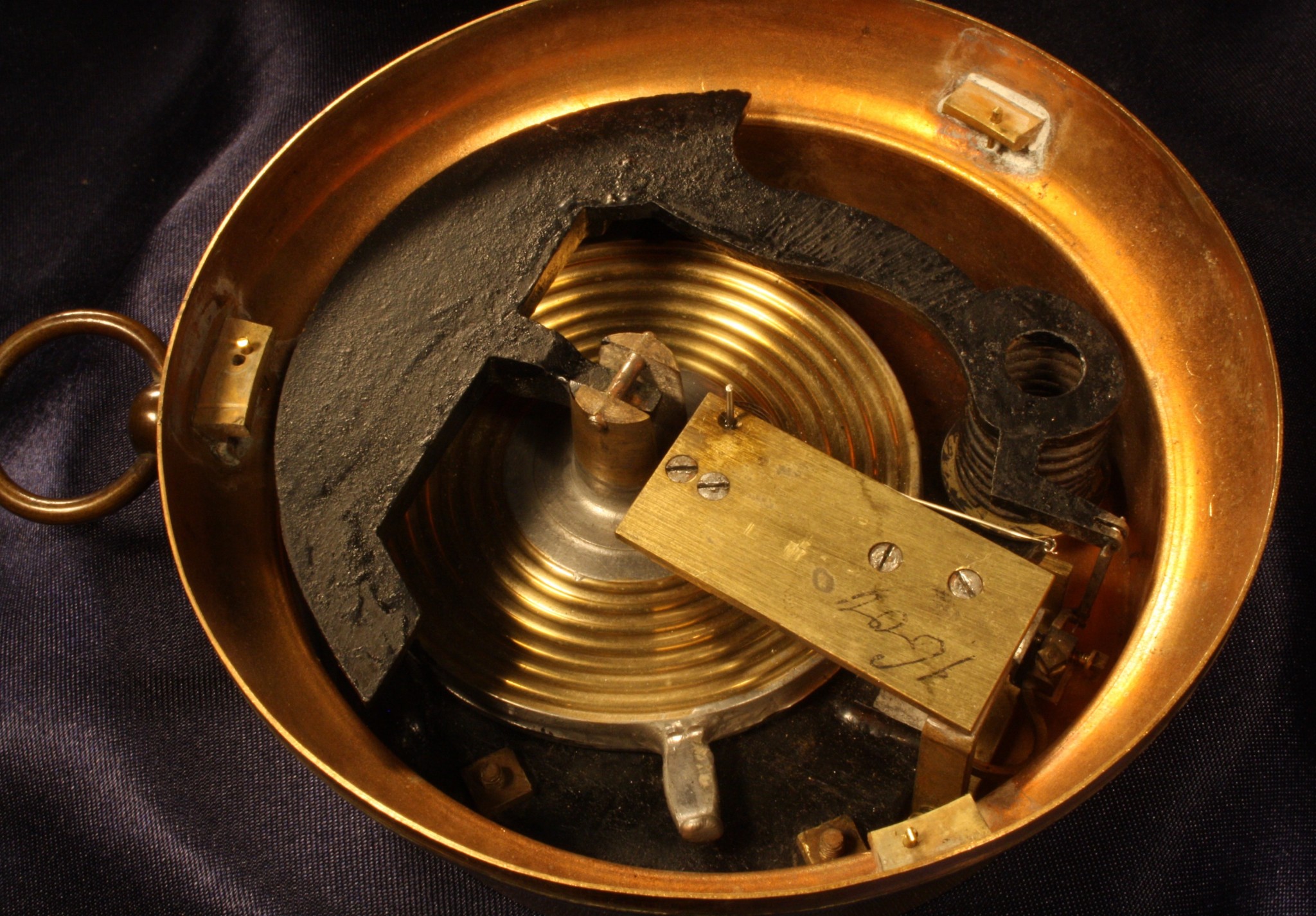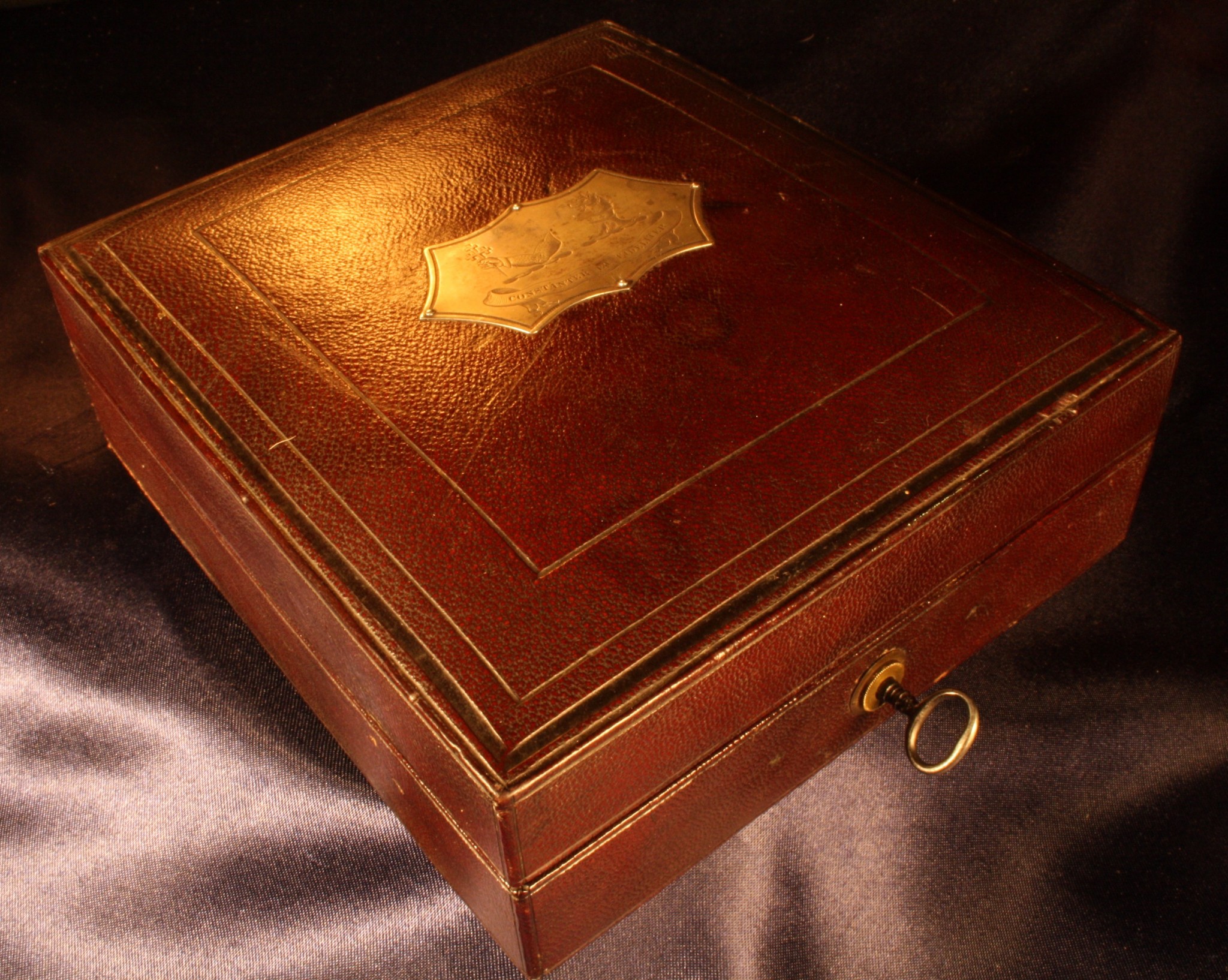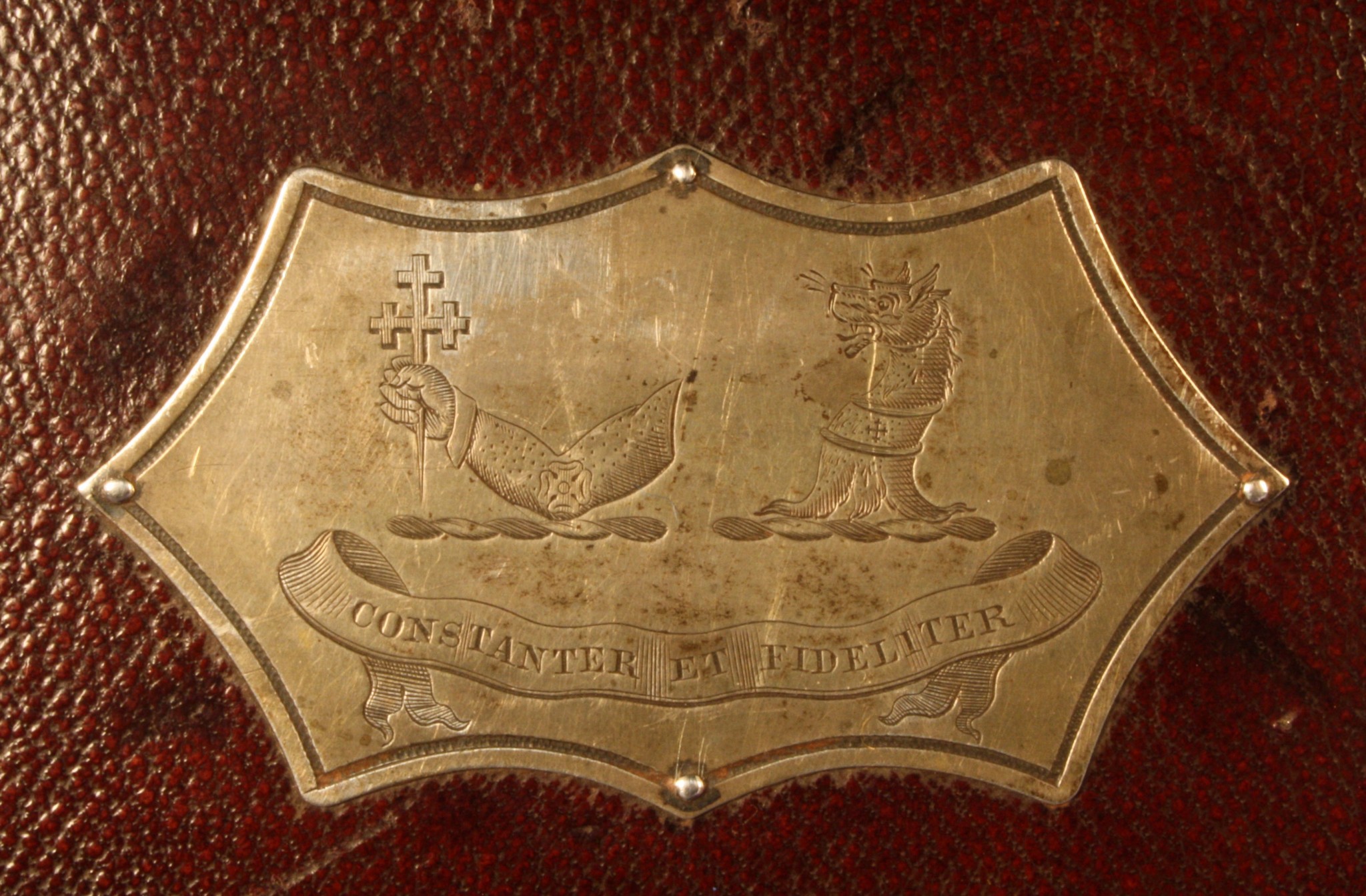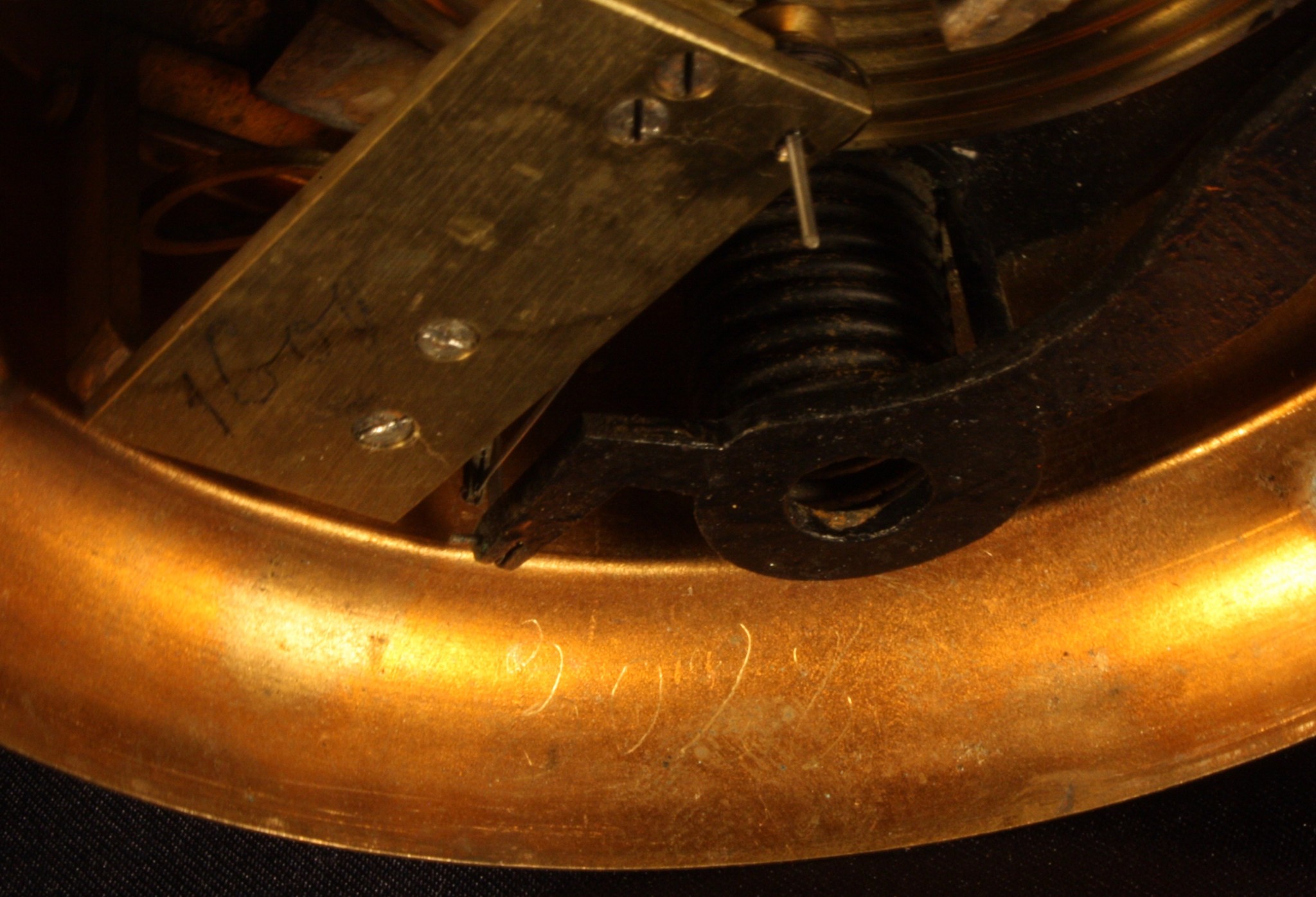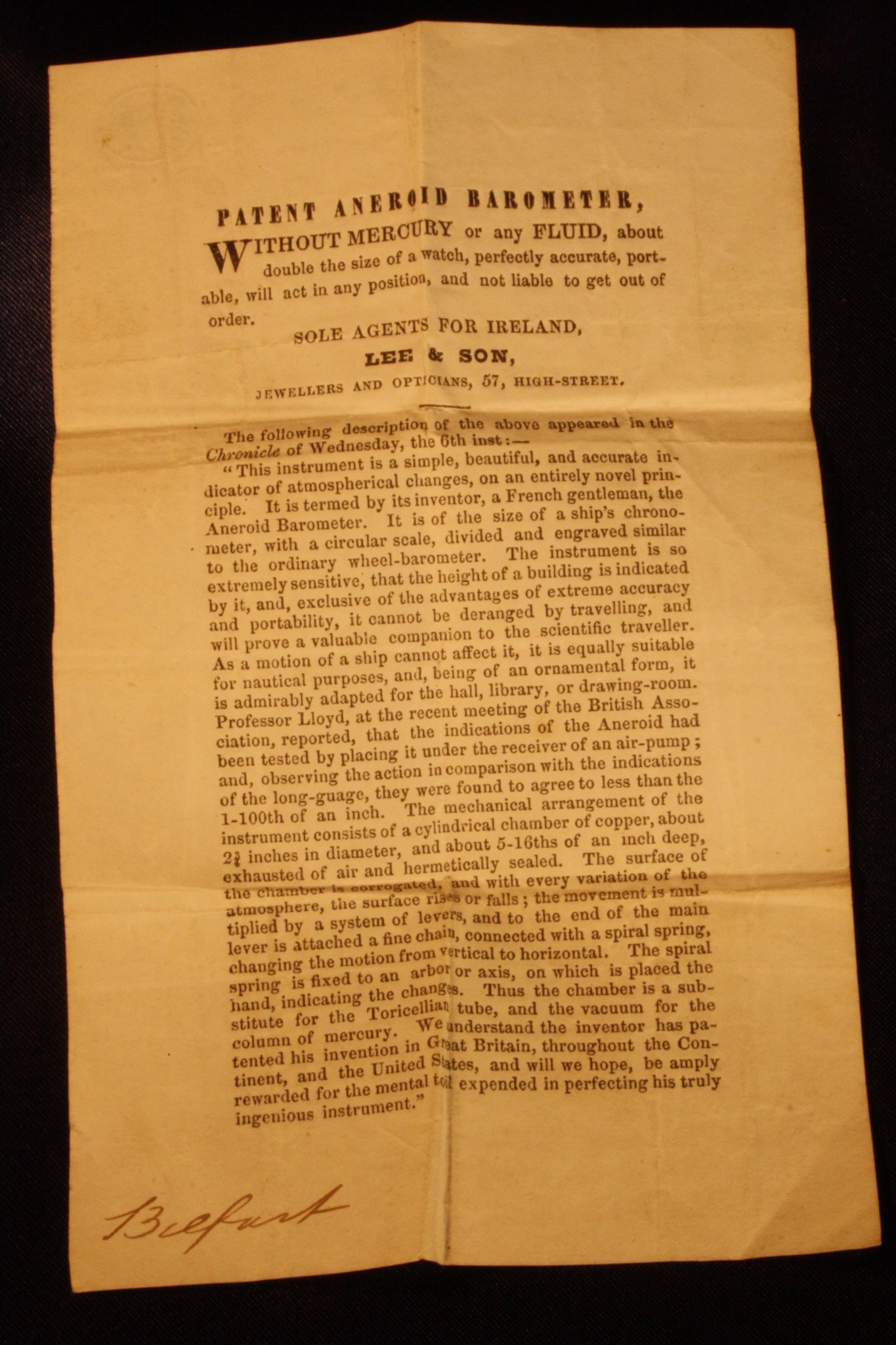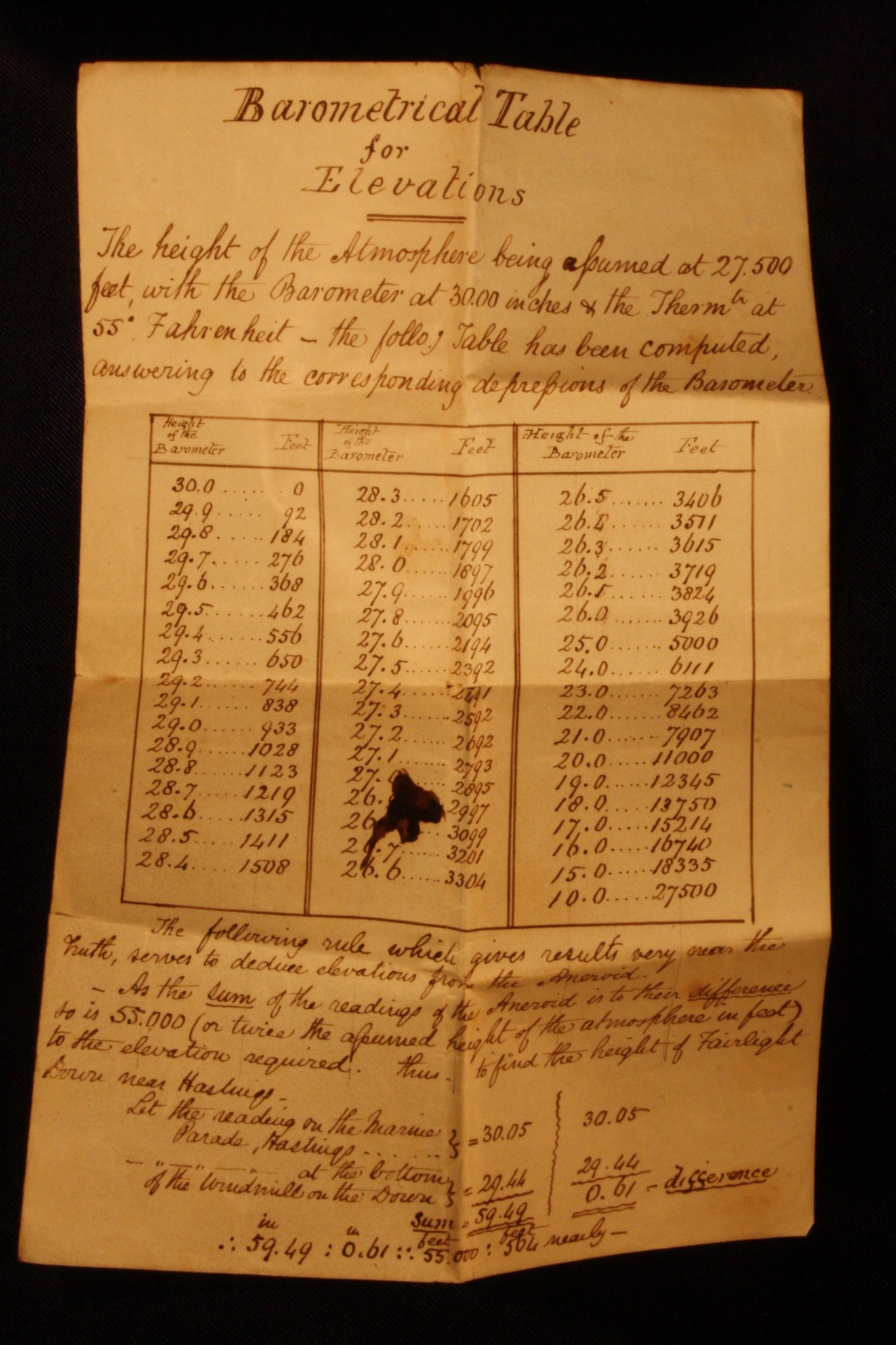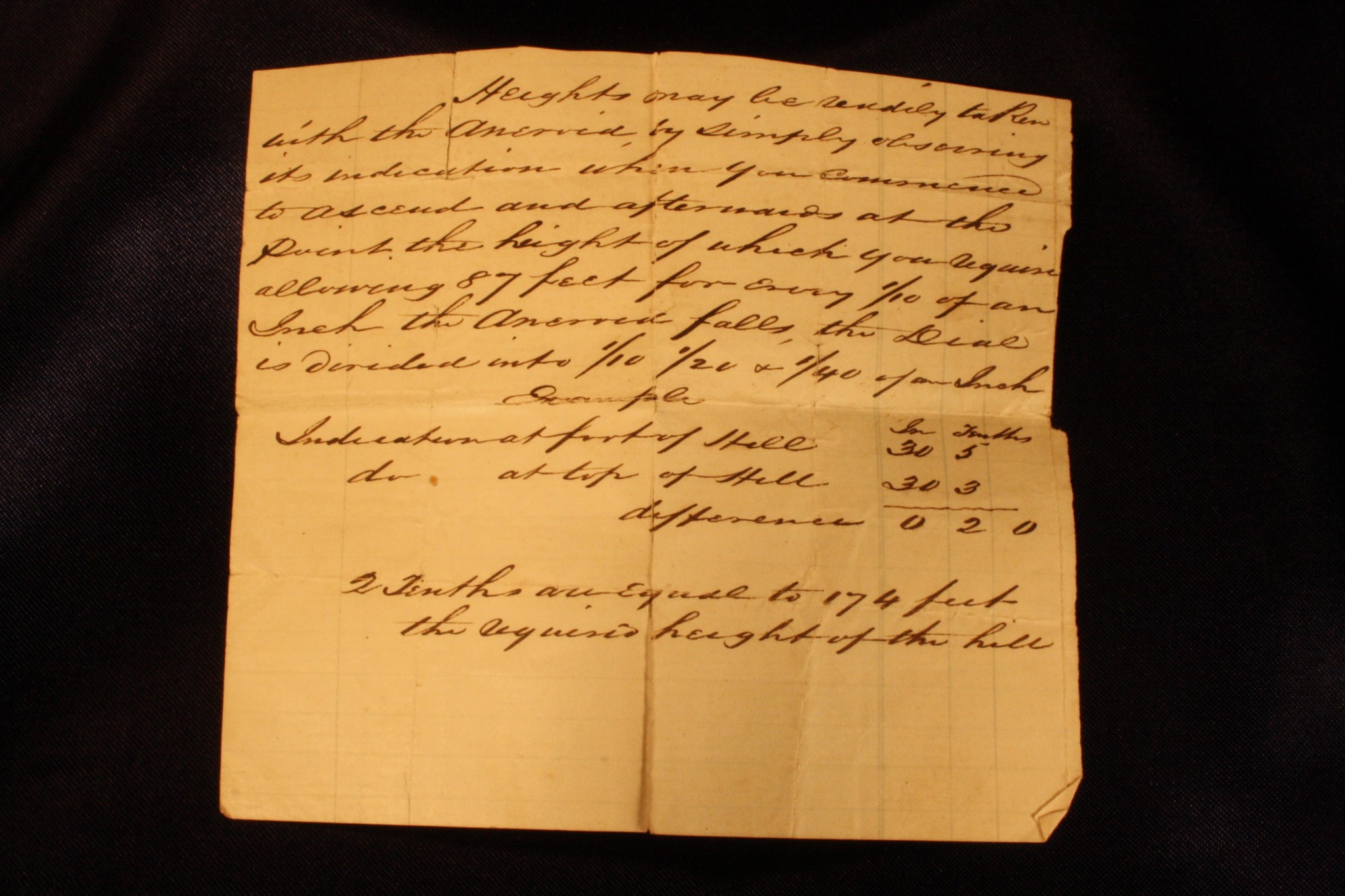Desk Barometer Attributed to Lucien Vidi No 3028 c1848 – SOLD
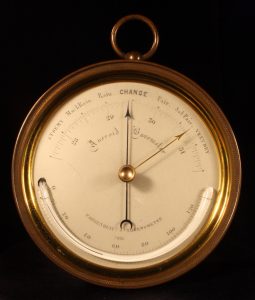 Vidi desk barometer with silvered and engraved 4” dial: the upper portion marked “Stormy,” “Much Rain,” “Change,” “Fair,” “Set Fair,” “Very Dry,” semi-circular barometric scale with a range 27½–31½ inches of mercury, and, in script, “Aneroid Barometer;” the lower portion marked “Fahrenheit’s Thermometer” and serial no. “3028,” curved mercurial thermometer scaled from 0–130 degrees Fahrenheit, fine blued-steel pointer, gilt brass index set beneath flat, unbevelled glass in keeping with contemporary French barometers. The very early movement, with serial no. “1600,” driven by a 2¾” first pattern 7-ring copper capsule, substantial cast iron first pattern primary lever tensioned on a coil spring, early spiral type temperature compensation to main pivot, early pattern oblong cock, the whole set on a heavy square iron chassis retained in its brass case by three square nuts, the rear with compensation screw set at 7 o’clock, turned pillar with suspension loop.
Vidi desk barometer with silvered and engraved 4” dial: the upper portion marked “Stormy,” “Much Rain,” “Change,” “Fair,” “Set Fair,” “Very Dry,” semi-circular barometric scale with a range 27½–31½ inches of mercury, and, in script, “Aneroid Barometer;” the lower portion marked “Fahrenheit’s Thermometer” and serial no. “3028,” curved mercurial thermometer scaled from 0–130 degrees Fahrenheit, fine blued-steel pointer, gilt brass index set beneath flat, unbevelled glass in keeping with contemporary French barometers. The very early movement, with serial no. “1600,” driven by a 2¾” first pattern 7-ring copper capsule, substantial cast iron first pattern primary lever tensioned on a coil spring, early spiral type temperature compensation to main pivot, early pattern oblong cock, the whole set on a heavy square iron chassis retained in its brass case by three square nuts, the rear with compensation screw set at 7 o’clock, turned pillar with suspension loop.
The whole presented in its original, high quality, Morocco leather-bound and russet velvet-lined case, the lid bearing two crests and the motto “Constanter et Fideliter” engraved upon a white metal plaque. Working lock and key. Together with three paper sheets: the first entitled “Patent Aneroid Barometer,” an information bulletin supplied by the retailer Lee & Son, 57 High Street Belfast, Northern Ireland, being an exert from the Belfast Commercial Chronicle in 1848 – notably, this makes reference to the patentee, Lucien Vidi, the reverse carries a synopsis of provenance; the second, a description in fountain pen of the means by which altitude may be calculated from the barometric reading – these two documents bear hand-written inscriptions contemporary to the instrument and clearly in the same hand; the third, also written in ink, is entitled “Barometrical table for elevations” and makes interesting reference to Fairlight Down near Hastings – it includes an altitude scale from 0 to 27,500’, using 30 inches of mercury to define base level and 10 inches of mercury for 27,500’, assuming an ambient air temperature of 55 degrees Fahrenheit.
The dial with some marks, the case heavily patinated, the glass replaced, good working order and crisp overall condition with excellent sensitivity and progression. Fully serviced and calibrated.
This instrument, along with the other ‘Vidi’ Desk Barometer No. 4275 also showcased on this site, achieves an extremely rare combination of type, condition, rarity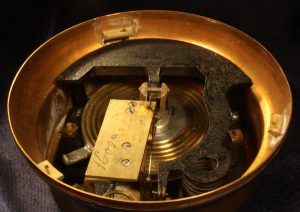 and historical significance. It bears all the hallmarks of one of the very first of its kind: the diameter and style of the capsule; the type and style of the primary lever; the overall configuration and style of the movement; the method by which it is mounted in the case; the method by which the dial is mounted to the case; the way in which the dial is engraved. Note the different earlier style in which “Aneroid Barometer” is engraved when compared to the similar instrument No. 2841, signed Dent, shown elsewhere on this site – though the two dials are certainly similar, they differ in a number of respects, mainly letter and number sizes but also font. The movement is different to Dent 2841 too. Collins, Philip, Aneroid Barometers and Their Restoration, p12, fig 2.3 shows an identical example to this Vidi barometer, whereas fig 2.4 shows a slightly later Dent movement which is the same as Dent 2841.
and historical significance. It bears all the hallmarks of one of the very first of its kind: the diameter and style of the capsule; the type and style of the primary lever; the overall configuration and style of the movement; the method by which it is mounted in the case; the method by which the dial is mounted to the case; the way in which the dial is engraved. Note the different earlier style in which “Aneroid Barometer” is engraved when compared to the similar instrument No. 2841, signed Dent, shown elsewhere on this site – though the two dials are certainly similar, they differ in a number of respects, mainly letter and number sizes but also font. The movement is different to Dent 2841 too. Collins, Philip, Aneroid Barometers and Their Restoration, p12, fig 2.3 shows an identical example to this Vidi barometer, whereas fig 2.4 shows a slightly later Dent movement which is the same as Dent 2841.
There are a number of unanswered questions surrounding this instrument, not least as to whether Lucien Vidi maintained his own sequence of serial numbers for those instruments not sold in collaboration with E.J. Dent, which we hope to be able to resolve through further research. Please do contact us if you would like to be kept updated – or, indeed, if you have any information to contribute.
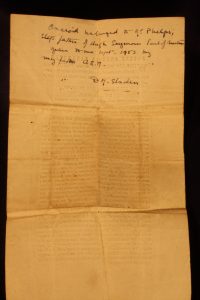 Provenance: One of the crests, the arm holding the fitched crosslet, is that of the McDonnells of Murlough and Kilmore, county Antrim: “A Dexter Arm Embowed Fesseways Couped At The Shoulder, Vested Or, Cuffed Arg., Holding In The Hand Ppr, A Cross Crosslet Fitchée Erect Az.” The family motto is ‘Toujours prêt – Always Ready.’ The second, the wolf, is that of the O’Quinns: “A Wolf’s Head Erased Erm.” The motto attached to that crest is ‘Quod sursum solo voider’ – I am resolved to look upwards.’ (Fairbairn’s Book of Crests of the Families of Great Britain and Ireland, 1905 ed.). Antrim is divided into 16 baronies: Cary was part of the Glynnes (or Glens), ruled originally by the O’Quinn sept until the MacDonnell galloglasses from Scotland took power here in the late Middle Ages. The MacDonnells were a branch of the Scottish Clan MacDonald.
Provenance: One of the crests, the arm holding the fitched crosslet, is that of the McDonnells of Murlough and Kilmore, county Antrim: “A Dexter Arm Embowed Fesseways Couped At The Shoulder, Vested Or, Cuffed Arg., Holding In The Hand Ppr, A Cross Crosslet Fitchée Erect Az.” The family motto is ‘Toujours prêt – Always Ready.’ The second, the wolf, is that of the O’Quinns: “A Wolf’s Head Erased Erm.” The motto attached to that crest is ‘Quod sursum solo voider’ – I am resolved to look upwards.’ (Fairbairn’s Book of Crests of the Families of Great Britain and Ireland, 1905 ed.). Antrim is divided into 16 baronies: Cary was part of the Glynnes (or Glens), ruled originally by the O’Quinn sept until the MacDonnell galloglasses from Scotland took power here in the late Middle Ages. The MacDonnells were a branch of the Scottish Clan MacDonald.
The paperwork indicates that the barometer was originally the property of Edmund Phelps MacDonnell, second husband of Anne-Catherine MacDonnell, Countess of Antrim in her own right. It suggests that Phelps was the step-father of Hugh Seymour MacDonnell, the 4th Earl of Antrim, but our corroborative research indicates that Hugh Seymour was the son of Anne-Catherine’s sister, Charlotte, who became Countess of Antrim upon the death of her sister. Phelps was therefore the step-uncle of the 4th Earl.
Dimensions: 5½” wide x 6¾” deep x 2¼” high
Stock No: BA0330
Price: SOLD
FOR MORE INFORMATION ABOUT THIS ITEM, PLEASE CALL +44 (0)1584 841210 OR COMPLETE AND RETURN THE FORM BELOW
